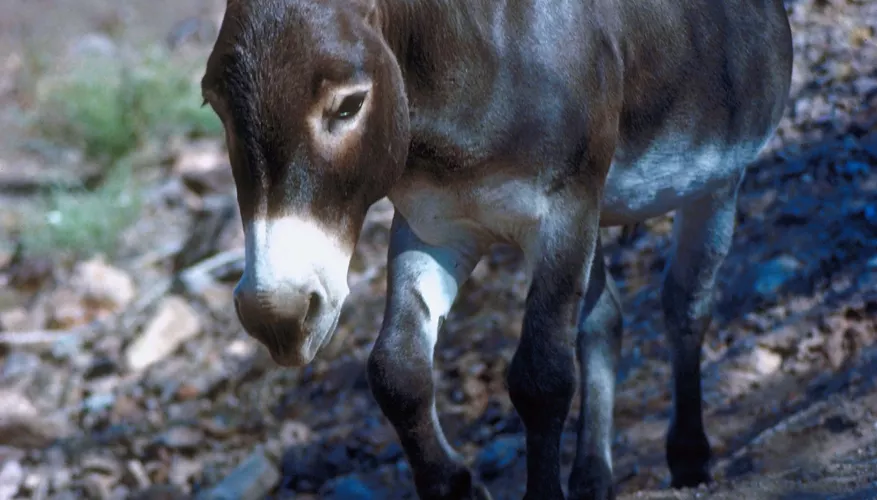Mules and hinnies are hybrid equines resulting from the crossbreeding of horses and donkeys. While both are classified as mules in the equestrian world, they have distinct differences in appearance, temperament, strength, and parentage. These hybrids are known for their sturdiness, intelligence, and longevity, making them ideal working animals with greater endurance than horses.

| Feature | Mule | Hinny |
|---|---|---|
| Parentage | Offspring of a male donkey (jack) and a female horse (mare) | Offspring of a female donkey (jenny) and a male horse (stallion) |
| Size | Generally larger due to the size of the horse mother | Smaller, as the donkey mother has a smaller womb |
| Appearance | Body resembles a horse, extremities resemble a donkey | Body resembles a donkey, extremities resemble a horse |
| Ears | Longer than a horse’s but shorter than a donkey’s | Shorter than a mule’s but still longer than a horse’s |
| Mane & Tail | Thin, short, upright mane; tail is a mix of donkey and horse hair | Thicker, longer mane and tail |
| Hooves | Straight-sided, small, and hard | Rounder hooves than a mule’s |
| Hybrid Vigor | Stronger, more resilient, and long-lived | Less robust, smaller, and with lower stamina |
| Temperament | Intelligent, perceptive, and quick learners; curious and independent | Quieter, more compliant, and less adventurous |
| Social Preference | Tends to bond with horses | Prefers to associate with donkeys |
The main distinction between mules and hinnies lies in their parentage:
A mule results from breeding a male donkey (jack) with a female horse (mare).
A hinny is produced by crossing a female donkey (jenny) with a male horse (stallion).
Since horse mothers tend to be larger than donkey mothers, mules are generally bigger than hinnies. Mules often take on distinct characteristics from both parents, while hinnies show more variation in their appearance.
While mules and hinnies can look similar, subtle physical differences help tell them apart.
Body resembles a horse, with long ears like a donkey.
Short, thin mane, sometimes standing upright.
Hooves are small, straight-sided, and very strong.
Tail has both short hairs (like a donkey) and longer hairs (like a horse).
Body resembles a donkey, with shorter ears than a mule.
Thicker and longer mane and tail compared to a mule.
Hooves are rounder, making them slightly more horse-like.
More variation in appearance, some looking almost like a horse while others appear mule-like or donkey-like.
One of the most significant advantages of mules is their hybrid vigor, which gives them:
Greater strength than horses.
Longer lifespans and extended working lives.
Higher resistance to diseases and extreme weather conditions.
Exceptional stamina and resilience.
Hinnies, however, are generally smaller and less hardy than mules. This is partly due to being carried in a smaller womb, but also because they do not exhibit hybrid vigor to the same extent.
Mules and hinnies differ in their mental abilities and behavior.
Highly intelligent, quick learners, and perceptive.
More independent and curious than hinnies.
Can assess situations and make smart, calculated decisions.
If trained well, they can be loyal, patient, affectionate, and playful.
However, they can also be stubborn, jealous, and proud if treated poorly.
More reserved and less curious than mules.
Generally calmer and more compliant.
More inclined to avoid trouble rather than confront it.
Takes on more donkey-like traits, making them quieter and less adventurous.
Another way to distinguish a mule from a hinny is by observing their social preferences.
Mules, raised by horse mothers, tend to prefer the company of horses.
Hinnies, raised by donkey mothers, feel more comfortable socializing with donkeys.
If released into a mixed group of equines, a mule will gravitate towards horses, while a hinny will seek out donkeys.
Although mules and hinnies share common characteristics as horse-donkey hybrids, they have clear differences in size, appearance, strength, intelligence, and behavior.
Mules are larger, stronger, and more resilient, with greater hybrid vigor and intelligence.
Hinnies are smaller, quieter, and more donkey-like, with less stamina and endurance.
Understanding these key differences can help equestrians, farmers, and enthusiasts identify, train, and care for these incredible hybrid equines effectively.
animal tags: mule
We created this article in conjunction with AI technology, then made sure it was fact-checked and edited by a Animals Top editor.